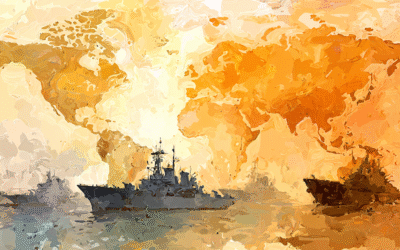At a time when global challenges seem more daunting than ever—from climate change to rising geopolitical tensions—the need for a unified approach to human cooperation has never been more crucial. The concept of a global civic culture, where individuals see themselves as active participants in a worldwide community, offers a powerful framework for addressing these challenges. This comprehensive guide explores how we can build and nurture such a culture, drawing from both historical wisdom and contemporary innovations.
Beyond Borders: Reimagining Global Community
In our interconnected world, the traditional boundaries between nations increasingly blur in the face of shared challenges. A global civic culture represents far more than diplomatic relations or international trade agreements—it embodies a fundamental shift in how people understand their place in the world and their responsibilities to the broader human family.
This cultural transformation requires us to reimagine community on a global scale while preserving the rich diversity of local traditions and identities. It’s about creating bridges between different ways of life while maintaining the unique characteristics that make each culture valuable and distinct.
The Visionary Who Saw Tomorrow: Elise Boulding’s Revolutionary Ideas
Elise Boulding (1920-2010) stands as one of the most influential thinkers in peace studies and global citizenship. Her revolutionary ideas continue to shape our understanding of how to build lasting peace and cross-cultural understanding. As a Quaker, sociologist, and feminist, Boulding brought a unique perspective to the challenge of creating a more peaceful world.
Imagination: The Catalyst for Change
Boulding’s most powerful insight was recognizing imagination as the cornerstone of social transformation. She developed innovative methodologies for helping people envision peaceful futures:
- “Imaging workshops” where participants detailed their vision of a peaceful world 200 years in the future
- Structured exercises to help people “pre-experience” positive social change
- Techniques for breaking down mental barriers to transformative thinking
- Methods for connecting individual visions to concrete action plans
These approaches helped participants move beyond the paralysis often induced by seemingly insurmountable global challenges, enabling them to see themselves as active agents of change.
Time Travel for Peace: The 200-Year Present
Boulding’s concept of the “200-year present” revolutionized how we think about social change and historical responsibility. This timeframe encompasses:
- The lifespan of the oldest person you knew in your childhood
- Your own lifetime
- The potential lifetime of the youngest person who will be born before your death
This perspective helps people understand their place in the historical continuum and their responsibility to both past and future generations. It makes abstract concepts like intergenerational justice and sustainable development more concrete and personally relevant.
Breaking the War Mold: Women as Architects of Peace
Boulding’s feminist perspective on peace-building highlighted how traditional approaches often overlooked crucial aspects of creating sustainable peace:
- The role of women in maintaining social fabric during conflicts
- The importance of informal networks and relationships in peace-building
- The value of “everyday peace work” in families and communities
- The need for diverse voices in peace processes
- The connection between gender equality and sustainable peace
Her research showed that peace agreements involving women are 35% more likely to last at least 15 years, highlighting the practical importance of inclusive peace-building processes.
People Power: The Hidden Force of Civil Society
Boulding emphasized the vital role of civil society—what she called the “middle realm”—in creating and maintaining peace:
- Religious and spiritual communities
- Professional associations and labor unions
- Cultural organizations and artists’ networks
- Environmental groups and activists
- Educational institutions and networks
- Local community organizations
These groups create the social infrastructure necessary for sustainable peace by building relationships across dividing lines and maintaining channels of communication even during conflicts.
Peace in Action: Modern Success Stories
Champions of Change: Global Initiatives That Work
Several contemporary initiatives demonstrate the practical application of Boulding’s principles, showing how global civic culture can be built from the ground up.
Cities of Peace: Where Local Meets Global
The International Cities of Peace network has grown to include over 300 cities worldwide, each implementing creative approaches to peace-building:
Hiroshima, Japan:
- Annual peace declaration and ceremony
- Peace education programs in all schools
- International peace research center
- Cultural exchange programs focused on peace
- Museum and memorial maintaining historical memory
Manchester, UK:
- Community mediation services
- Youth peace ambassador program
- Interfaith dialogue initiatives
- Urban peace gardens
- Conflict resolution training for community leaders
Münster, Germany:
- Annual peace culture festival
- School partnership programs
- Peace economy initiatives
- Environmental sustainability projects
- Cross-border cooperation programs
Digital Bridges: Technology for Peace
Innovative digital initiatives are creating new possibilities for global connection and understanding:
- Virtual reality peace education programs
- Online conflict resolution platforms
- Digital cultural exchange programs
- Social media campaigns for peace awareness
- International collaborative art projects
- Virtual peace conferences and workshops
Grassroots to Global: Community Peace Infrastructure
Successful local initiatives that scale globally include:
- Neighborhood peace centers
- Community mediation programs
- Intercultural dialogue forums
- Peace gardens and public spaces
- Local peace economy projects
- Cross-cultural arts festivals
Building Tomorrow: Policy Frameworks for Peace
National Foundations: Creating Peace Infrastructure
Ministries of Peace
Countries should establish dedicated peace ministries with comprehensive mandates:
Executive Functions:
- Coordinating national peace initiatives
- Developing conflict prevention strategies
- Managing domestic dispute resolution services
- Overseeing international peace-building programs
- Allocating resources for peace research
Educational Responsibilities:
- Developing peace education curricula
- Training conflict resolution specialists
- Supporting peace research institutions
- Creating public awareness programs
- Facilitating cultural exchange initiatives
Economic Foundations for Peace
Economic policies should support peace-building through:
- Peace-oriented investment funds
- Conflict-sensitive business practices
- Fair trade initiatives
- Social enterprise support
- Community development programs
- Sustainable economic practices
Global Architecture: Strengthening International Systems
Reforming Global Institutions
Key areas for international reform include:
Representation:
- More inclusive decision-making processes
- Greater civil society participation
- Better regional representation
- Enhanced transparency mechanisms
- Stronger accountability systems
Operational Improvements:
- Rapid response capabilities
- Enhanced coordination mechanisms
- Better resource allocation
- Improved monitoring systems
- Stronger enforcement capabilities
Climate Action for Peace
Integrating climate and peace initiatives through:
- Joint impact assessments
- Community adaptation programs
- Indigenous knowledge integration
- Cross-border environmental cooperation
- Climate refugee protection
Digital Age Challenges and Solutions
Combating Misinformation
Strategies for maintaining information integrity:
- Digital literacy programs
- Fact-checking networks
- Media accountability systems
- Cross-cultural verification methods
- Community truth-telling initiatives
Building Digital Citizenship
Creating responsible online communities through:
- Digital ethics education
- Online conflict resolution tools
- Virtual community building
- Cross-cultural digital exchanges
- Cyber-peace initiatives
The Road Ahead: Our Shared Journey to Peace
Measuring Progress
Effective implementation requires:
- Clear peace indicators
- Regular assessment protocols
- Community feedback mechanisms
- Impact monitoring systems
- Best practice sharing
Sustaining Change
Long-term success depends on:
- Sustainable funding models
- Institutional support systems
- Community engagement
- Cultural integration
- Continuous adaptation
From Vision to Reality
Building a global civic culture represents one of humanity’s greatest challenges and opportunities. By combining Boulding’s visionary framework with modern tools and approaches, we can create the foundations for lasting peace. Success requires sustained commitment from individuals, communities, and institutions worldwide, but the alternative—a world of increasing division and conflict—makes this effort not just desirable but essential.
The path forward involves:
- Embracing our shared humanity while celebrating diversity
- Building peace infrastructure at all levels of society
- Leveraging technology for positive change
- Creating sustainable economic systems
- Nurturing cross-cultural understanding
- Protecting our shared environment
Through these efforts, we can move closer to realizing the vision of a truly global civic culture—one that promotes peace, justice, and shared responsibility for our collective future.










0 Comments